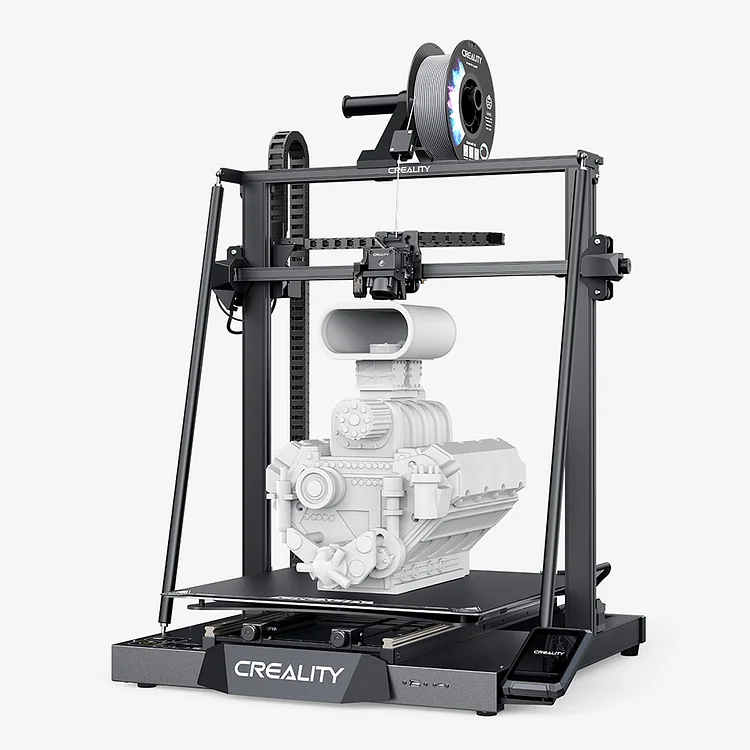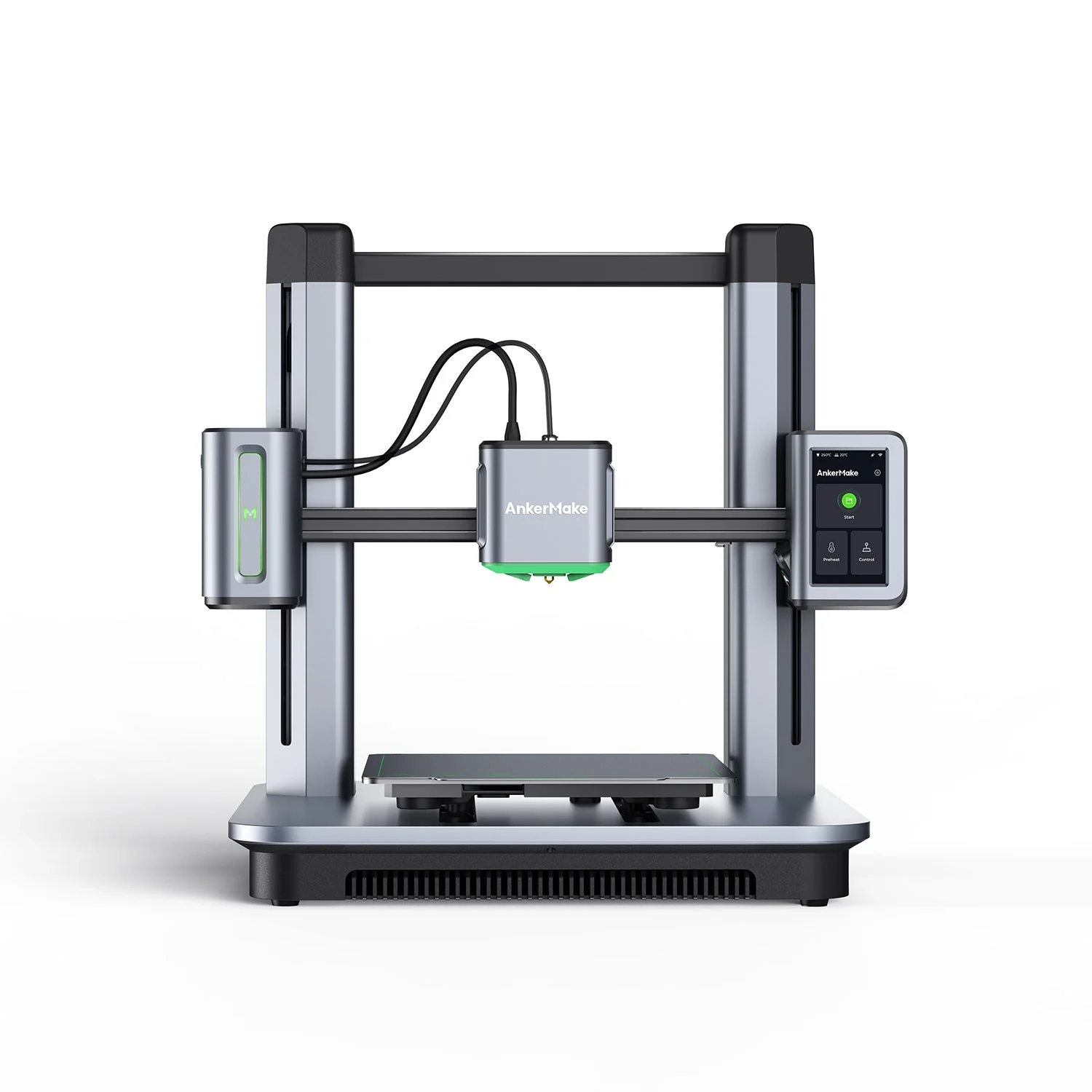Compare CR M4 vs M5
Comparison between the best 3D printers
Choose the best 3D printer at the best price. The cheapest 3D printers are here.
Buy a 3D printer here with 3D Fila.
 |
 |
|
| Model | CR M4 |
M5 |
| Printing Material | Filament | Filament |
| Buy Filament for Creality 3D CR M4 | Buy Filament forAnkerMake M5 | |
| Estimated price | $1099,00 | $497,00 |
| Manufacturer | Creality 3D | AnkerMake |
| Release Year | 2023 | 2023 |
| Print Volume [mm] | 450x450x470 | 235x235x250 |
| Printer Size [mm] | 655x700x865 | 502x438x470 |
| Weight [kg] | 23 | 12,6 |
| Power Loss Recovery | YES | YES |
| Enclosed printer | NO | NO |
| Bed Leveling | Automatic | Automatic |
| Filament End Sensor | YES | YES |
| Bed type | Heated | Heated |
| Power supply system | Direct Drive | Direct Drive |
| Standard nozzle | 0,4 | 0,4 |
| Maximum Nozzle Temperature [°C] | 300 | 260 |
| Maximum Bed Temperature [°C] | 100 | 100 |
| Maximum printing speed [mm/s] | 180 | 500 |
| Filament holder | YES | YES |
| Camera for supervision | NO | NO |
| Recommended filaments | PLA, PETG, TPU, ABS, PLA-Wood, PA, PLA-CF | PLA, PETG, ABS |
| Recommended slicers | Cura, Simplify, Slic3r, IdeaMaker | AnkerMake Studio (macOS, Windows), Simplify3D, Ultimaker Cura, PrusaSlicer |
| Maximum Resolution [mm] | 0,1 | 0,1 |
| Processor | ||
| Display | Display touchscreen 4,3'' | Touchscreen 4,3'' |
| Power Supply | 110/220V / 800W | 350 W |
| Connectivity | SD / USB / Wi-Fi | Wi-Fi, USB-C, OTA Upgrade |
| Operating systems | Windows, Mac, Linux | Windows, Linux, Macbook |
| Date of registration in the system | 2023-02-06 | 2024-07-08 |
| Release date | 2023 | 2023 |
| Extra features | The Creality CR-M4 printer stands out for its easy assembly and automatic table leveling. With dual-gear extruder technology and direct drive, it ensures quality prints. It offers Wi-Fi and LAN connections for easy file sending. Its large construction volume of 450x450x470 mm allows for bold projects. It has linear rails and a high-power Y motor, supporting up to 30 kg on its plate. The innovative design includes an efficient cooling system and a removable screen controller, optimizing usability and comfort during printing. | The AnkerMake M5 printer stands out for its impressive print speed, reaching up to 500mm/s. It features AI print monitoring, an integrated camera for creating timelapses, auto-leveling bed with pressure sensor, direct extruder, flexible PEI-coated build plate, and Wi-Fi and USB-C connectivity. Assembly is quick and easy, and the printer is designed to deliver high print quality and ease of use. |
| Support for multiple colors and materials (AMS and CFS) | NO | NO |
Notes * |
||
| Cost-benefit | 6 / 10 | 7 / 10 |
| Hardware | 2.8 / 10 | 3.5 / 10 |
| Tela | . | . |
| Print volume | 4 / 10 | 3 / 10 |
| Performance | 1 / 10 | 4 / 10 |
Conclusion |
| In comparing the Creality CR M4 and AnkerMake M5 3D printers, several key differences become evident, impacting their selection based on user needs and budget considerations. The Creality CR M4, while positioned at a higher price point, offers a more substantial print volume, making it suitable for larger projects. Its robust build features, such as dual-gear extrusion technology and a high-power Y motor, support demanding prints, which may appeal to professionals or serious enthusiasts. Additionally, the CR M4's ability to handle various filament types enhances its versatility, though it lacks some modern features like an integrated camera for monitoring prints. On the other hand, the AnkerMake M5 shines with its impressive print speed and user-friendly design. Its automatic bed leveling, integrated AI monitoring, and quick connectivity options (Wi-Fi and USB-C) make it a more accessible choice for beginners and those valuing rapid project turnaround without compromising print quality. Its significantly lighter weight and compact size also add to its ease of use in smaller workspaces. Ultimately, for users focused on large-scale printing and versatility, the Creality CR M4 may justify its higher cost. Conversely, for those prioritizing speed, ease of use, and affordability, the AnkerMake M5 presents a compelling option. Choosing between these two models will depend largely on specific printing needs, budget constraints, and user experience preferences. |

